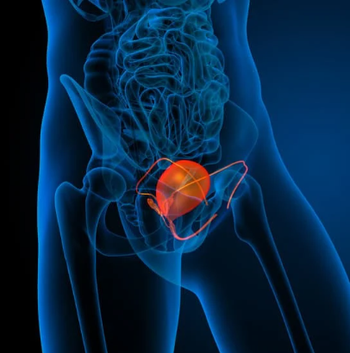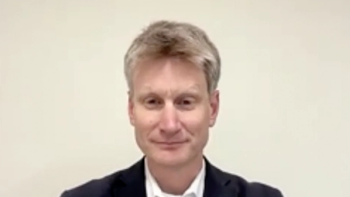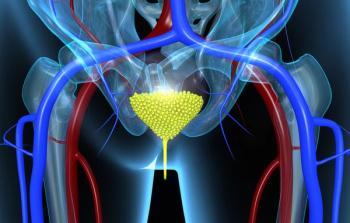
How Has Radiotherapy Advanced in Cancer Treatment?
Compared with 25 years ago, radiotherapy is much more personalized and targeted, thus reducing the strain on patients with cancer.
Surrounding the
Price discussed the evolution of radiotherapy in the 21st century. More specifically, the discussion touched upon topics such as patient experiences, efficacy outcomes, personalization, and accessibility.
The conversation took place in the wake of the release of a radiotherapy impact report detailing the past, present, and future of radiotherapy.
Read the full report here:
CancerNetwork: How has radiotherapy evolved over the past 25 years?
It's transformed terrifically. Radiotherapy has been around for a long time—since Marie Curie's day. We knew that radiation could affect tumors, and over the years, we've been able to deliver it more effectively. Over the last 15 to 20 years, what we've done is make it much more precise and individualized for patients with hardware, software, and the machines. Now, with artificial intelligence, instead of treating areas that are quite large with surface anatomy, we're down to precise areas, even looking adaptively and at movement. It means we can be much more individualized to a patient's tumor; we can give them a much better dose that will hopefully cure more tumors and, importantly, spare the normal tissue around. Radiotherapy doesn't have to be what we once thought of as a burning technique; this is a very effective treatment where people can work through it and get on with their lives. With the technology, it has amazingly been [advanced] and great for patient care.
Clinically, how may these advances have altered a patient’s experience receiving radiotherapy?
It's difficult on an individual case to know, “Oh, I cured this patient, and I wouldn't have done this earlier on,” because there are plenty of patients over the years whom we cure and think, “Yay. That's been great.” The biggest change we see is in patients being able to tolerate their treatment better and being able to get on with their lives. Often, if they tolerate it, they can take the dose and then be cured. For instance, now in prostate cancer, radiotherapy is needed in about one-third or nearly half of men with prostate cancer; if they aren't able to have the operation, if they prefer the radiotherapy, and if they're perhaps older, this is a curative treatment.
In the past, I remember years ago—probably in the 1960s—there would be a joke that you'd have to have a 10 × 10 square and center it on the second trouser button because you had no imaging. You had to use surface markers. Now can you imagine the toxicity from that? Then we have to give treatment. We used to give radiotherapy for prostates over 32 treatments—that’s 6.5 weeks, and that's a man coming in every day, Monday to Friday. But now, in some senses, we can give [radiotherapy] with the targeted therapy, especially if we've got spacer devices to move the bowel out of the way and target it in some of the intensity-modulated radiotherapy and with the MR [magnetic resonance]-based linacs [linear accelerators]. We can give this in 2 treatments accurately. Can you imagine the difference for a patient coming in twice rather than coming in for much more toxic treatment over 6 weeks? It’s transformational.
What are the impacts of using hypofractionated methods of radiotherapy like stereotactic body radiation therapy (SBRT)?
For SBRT, we're giving a very packed dose. By definition, you're giving it to a really small area. If we cannot treat the normal tissue, it's much kinder. For instance, take SBRT for the brain. When we do stereotactic [radiation], we used to, before we had the technology, treat the whole brain for metastases; obviously, you would get some swelling in the brain, and you perhaps had cognitive [issues]. It was a fairly tough treatment, and you'd think twice about whether you do it, whereas now, for these tiny or bigger metastases, you can just treat the area. Patients can sail through their treatment. I wouldn't call that aggressive. I would say that's fantastic…. If you think about [stereotactic radiosurgery] for the brain, the treatment can take a long time, but in one treatment session, they can perhaps have 4 or 5 metastases treated with hardly any toxicity.
As radiotherapy has become safer, how do physicians and experts translate that to patients?
Radiotherapy is a very evidence-based subject. We can tell quite accurately how well we think [a patient] is going to do. We can be very clear to patients about what benefit we think they're going to get and what [adverse] effects they could get. We work with them on whether they want it because we then have to get them through treatment. It's a treatment that, once you've started, you do need to finish. It's important you get that buy-in right from the front and they’re prepared. It is a bit like an operation; you've got to be prepared for this. It's not like some systemic therapy where you can start it or you can stop it for a bit or dose reduce. The treatment is over time; it's important to get them on board and get them prepared and in a good place for that. We know how to do that better.
Also, we've got the huge advantage because when patients come in for treatment, they've got the wonderful therapy radiographers—some people call them radiotherapists, and some people call them radiation technologists. They [are the ones] who treat the patients on the machine, which will help the patients, center them, explain the treatment, and get them on and off the bed. These people are well trained, and they're seeing those patients every day on treatment. They're also giving them that holistic support and helping them through [everything] by answering their questions. That can be a huge support for the patients. Then, even [with] some late effects, clinics [are] seeing them afterwards; [the patients] know they're being cared for. It was very interesting during [the COVID-19 pandemic] that, when everybody was remote and wasn't seeing [patients], we had patients say it was only when they came for their radiotherapy that they actually saw somebody and were touched by somebody and somebody spoke to them face-to-face. We must not underestimate the care that can be given during treatment as well.
What are the obstacles to implementing better radiotherapy infrastructure in lower- and middle-income regions?
You can have inaccessibility in high-income countries as well. Currently, in the UK, we have our own problems with access as well. There are a number of levels. There's a geography problem, where you have to go to the machines. If you're in a very wide area—38 countries in the world don't have access to radiotherapy—if you want radiotherapy, you have to travel. Travel distance is often a problem. Obviously, as we can get more access with machines into places, you can improve on that. The other thing, at a policy level, is recognizing the importance of radiotherapy. Now it is actually a relatively cheap treatment. In the UK, we assess that a machine may cost £2 million…. That sounds like a lot of money, but that can treat 700 patients a year for 10 years. That is very cheap; in the UK, that works to £400 per patient. As the staff, we reckon it's about £7000 maximum for treatment. This is nothing. One course of chemotherapy or immunotherapy can cost that amount, but I think it's very difficult to get that message through to policy makers.
What are the most promising avenues for future radiotherapy advancements?
There are 3 directions. There's more technology to come, and we're looking toward industry to develop those with even more precision and being able to [utilize] the technology in different ways. We've got flash techniques about different dose rates. We've also got some particle therapy coming on—I'm working on a project myself with heavy ions about slightly different cell kills. We've also got the interaction with immunotherapy, so [we can] explore more and research about how that's going on. Then, of course, we've got the radioimmunotherapy—the compounds that have radiation attached to them. How do they work with the external beam? There is a lot of exciting stuff, and we've got to get back to our initial thought. It's not like drug treatment, where we have to develop and make a drug that will work. Aren't we lucky? Radiation kills cancer. This is it. We didn't invent radiation. It's given to us. It's our job to find clever ways of using physics, engineering, software, and thinking to make it cure more cancers, save more lives, and give people better lives. That's the challenge, but [there’s a] great future for radiotherapy.
Reference
Precision targeting, global impact: cancer radiotherapy in the 21st century. AboutAdaptive. 2025. Accessed October 6, 2025. https://tinyurl.com/4rah5v6k
Newsletter
Stay up to date on recent advances in the multidisciplinary approach to cancer.






















































































